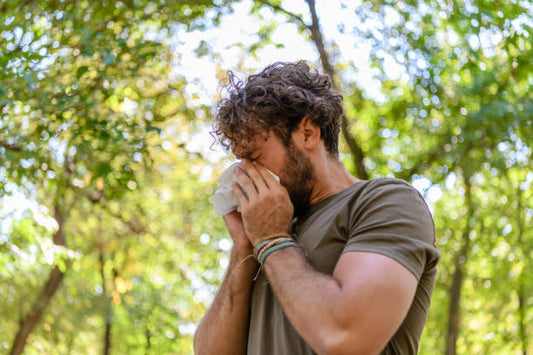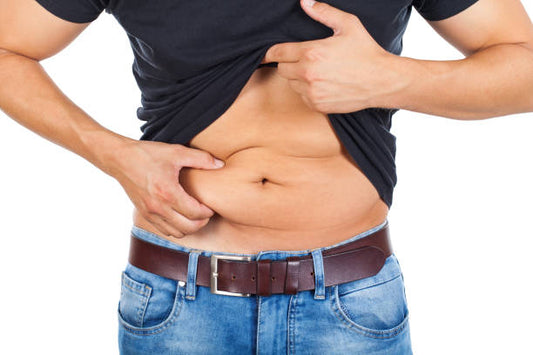
There are three mortal enemies to the middle aged man. These enemies are powerful foe who march with time into our bodies and steal our vitality. Enemy Number 1: Estrogen. Enemy Number 2: Andropause. Enemy Number 3: SHBG, sex hormone binding globule.
This sounds like a brutal world, where there are enemies everywhere. It almost makes you wish for a superhero, something to come along and defeat these terrible foes in one glance. Just such a hero exists in AE-3!
It is fair to say there is a need to back away from this slightly overdramatic tone now and get down to some useful information and fact giving. It was fun for a while – but it is likely that you are concerned that there is actually a superhero flying around ready to dive in to combat your testosterone issues. This could indeed lead to you feeling a little inadequate if anything, when your wife asks who he is.
Attack one: Estrogen
So, let’s take these enemies one by one. Testosterone is not the only hormone that is kicking around your body. Both men and women have both testosterone and estrogen, though in dramatically different proportions. As we move into middle age, the amount of estrogen increases. This is the bodies way of slowing us down a little bit, so our bodies don’t get exhausted by our passions. However, estrogen is also the enemy of dopamine, so therefore causes subdued mood. Testosterone loves dopamine and vice versa. Cortisol dislikes testosterone. So, all in all – estrogen is influential in low mood and increased negative stress caused by cortisol. It is meant to make you feel happier with a quieter life but as 50 and 60 is no longer old, it is just likely to lead to frustration.
Attack two: Andropause
High estrogen often means low testosterone though not always. You may have perfectly normal testosterone levels but are still feeling the effects of what is called the andropause. The idea that the reproductive and sexual function of women deplete with age. It is less known that the very same things happen to men. The increase in estrogen, whether it lowers testosterone or not, will have the effect of lowering libido and reducing the physiological performance needed for an active sex life. For women, this is a period of intense upset and difficulty. Women are happily given hormone replacement therapy. However, men’s issues are dealt with in a little more of a tongue in cheek, mock embarrassment.
Estrogen and testosterone are actually chemically similar. The only really differ by a single carbonyl and methyl group. However, the differences the chemicals make to the body are significant. Testosterone, the male hormone, is responsible for the thicker larynx, the thicker hair shafts, the larger organs, the thicker bone density and the differences to the sex organs. The reason why too-high estrogen is linked to osteoporosis is because it causes a brittleness of the bone. Estrogen is also the reason for greater breast development, less body hair and the more caring attitude. This is the reason why middle aged men might suddenly grow moobs, get bald spots and calm down more into older age – losing some of the aggression and virility of their twenties.
Possibly more upsetting for some, the increase in estrogen means that men are more likely to gain adipose fat, which is the fat around the belly. It is also harder for men to gain and retain muscle as they grow older. Therefore, the need to exercise as we get into middle age becomes more urgent. The increase of aromatase, the conversion of testosterone to estrogen, into middle age leads to a simultaneous rise in estrogen and decline in testosterone. This means that as we age the important ratio is completely out of favour for the retention of the all-important erection.
Attack three: SHBG

The third attack on testosterone comes from SHBG. This is a protein that increase with age and is caused by the increase in estrogen in the body. Testosterone binds with the protein and is no longer available to the man. This reduces the amount of testosterone in the body – both that secreted in the brain and that created by the Leydig cells in the testicles. This means that there is less sperm produced, longer gaps between erections and more than usual flaccid erection. This also reduces the amount of semen production, so man’s fertility is decreased. Although the man’s fertility does not stop in the same way as women’s does, it does lessen with age. Therefore, men as much as women deserve to have every chance to be a parent later into life, should they wish.
Battle 1…
The obvious answer would be to halt the process of aromatase, the conversion of testosterone to estrogen. This in turn would stop the increase in SHBG, which binds testosterone to protein. So, to help with the hormone modulation objectives that would help with sexual appetite and erectile strength there needs to be a supplement that reduces the effects of estrogen.
There is a bioflavonoid called chrysin that has proven itself an effective inhibitor to the aromatase process. However, it was difficult for the active ingredient for the body to be absorbed into the bloodstream. Therefore, even though it should inhibit estrogen and therefore boost testosterone – it didn’t. However, in 1999 there was a study published in Biochemical Pharmacology (1999) which identified why the absorption was impaired. It revealed the specific mechanism and found that a pepper extract significantly improved the bioavailability of chrysin. Chrysin combined with piperine reduces estrogen and increases testosterone.
There are many studies that support the use of chrysin as an inhibitor to the aromatase process. One study in the Journal of Steroid Biochemical Molecular Biology (1993) found that it was the most potent inhibitor – better in potency and effectiveness than the drug proferred by pharmaceutical companies. The scientists also claimed that the aromatase-inhibiting effects of these flavonoids could also contribute to other cancer preventative effects.
Ironically, studies into the fruits and vegetables that can be used in the diet of post-menopausal women to reduce the incidence of breast cancer in women, also discovered that chrysin was a potent inhibitor of the aromatase enzyme. Increased estrogen levels in women is known to increase the chances of this form of cancer. However, it revealed that the flavonoid has the potential to prevent increases in estrogen in men too. So, although the scientific interest in chysin is for its cancer preventative qualities, it is also important in boosting the testosterone levels in men and returning them to their youth.
The obvious reason to choose a plant over a chemical is because it has other health benefits than purely boosting testosterone. As well as boosting libido, it is thought that the flavonoid is able to reduce anxiety. It is possible that the sexual performance of men is more impacted by work related stress. Sexual performance is also reduced because of performance anxiety. So, the fact that the flavonoid has comparable results to diazepam, which is Valium, but without the sedation or relaxation of muscles. This offers relaxation to the brain but not to the body – a perfect combination for the improvement of sexual performance.
So, AE-3 fights for the sexual libido of men by inhibiting the aromatase enzyme, decreasing estrogen and increasing testosterone as well as offering anti-anxiety, anti-stress effects. This is one powerful supplement.
Battle Two!

We also need to step in and stop testosterone being bound to SHBG. This means that testosterone is left biologically inactive – in other words – it might as well not be there in the first place. Therefore, it is no longer available to produce the sexual and anabolic effects that we love from our testosterone. As we age we create more SHBG, as we gain estrogen we gain more SHBG – so as a result we lose our libido because we lose our testosterone.
Studies have shown that sexual interest declines with age. There is less free testosterone and so we begin to live a more passive, less sexually active life. This is also a reason why pure testosterone replacement therapy can have little long-term aphrodisiac effect. There may be more testosterone but it is not free, it is bound to protein and completely inactive. It is not bioavailable to cellular receptor sites where it would normally work to enhance sexual appetite and stimulate performance.
Nettle root has a great effect on the levels of free testosterone. A study in Europe showed that it had a mechanism for reducing the binding of testosterone to the protein. This meant that there as more free testosterone available to the body. It is more effective than straight out testosterone therapy because it frees up the hormone from the protein. As an added benefit, nettle root also helps with the treatment of prostate problems.
The final battle!
The body needs to be drained of excess estrogen, if the effects on men’s libido is to be countered. Estrogen is responsible for so many of middle aged men’s worries – include baldness, middle aged spread and loss of sexual appetite. Estrogen is also linked to all sorts of cancer, heart disease and prostate problems.
It might not be that you want to work on your libido or your erection. However, you are interested in overcoming the ill effects on health that are known to be caused by excess estrogen. The answer is DIM (Diindolylmethane). SIM is produced when indole-3-carbinol is digested. I3C is found primarily in watercress, sprouts, cauliflower and cabbage. Dim has a potent effect on the liver but it can also inhibit aromatase enzyme and therefore prevent the creation of excess estrogen. DIM also has many anti-carcinogenic effects on the body.
DIM has a pretty awesome mechanism. It is not estrogen, it is not a hormone, but as it metabolises so it helps estrogen to metabolise too. Therefore, this promotes a healthy balance of hormones in the body – now that really is clever!
So… the answer is all three?

Yes, when it comes to it, the answer to estrogen and SHBG is all three of these components together in one supplement. Without the action of all three, without the attack on estrogen, aromatase on the protein that binds to testosterone, there will be no change to your libido. Therefore, the answer is a supplement called AE-3. This is an advance formula that is designed with the enemies to testosterone in mind – all from natural sources, therefore with none of the extreme side effects of their pharmaceutical cousins.
Each one contains chysin, with enhanced bioavailability with the pepper extract. Then there is nettle root to reduce the binding to protein and then there is DIM, which helps estrogen to metabolise and results in a healthy hormonal balance. This is not a testosterone booster; this is not Viagra or some heater upper of your passion. This is a supplement that works against the effects of ageing and helps your body regain its youth. It also provides other extensive anti-cancer, anti-prostate problems impacts – which should not be underestimated. This is a powerful formula that optimises your chances of a healthy sexual desire and erectile functioning.
No one deserves to lose their sense of youth and vitality before they are ready. Life is stressful, it is hard to find happiness – the anti-anxiety features alone are worthwhile – however, testosterone is also a promoter of dopamine and fights cortisol. Therefore, AE-3 offers a massive promise of a better life.
So, in conclusion…
The ageing process is tough and it offers nothing but embarrassment for men. It is difficult for women, don’t get this wrong, but they gain sympathy and support. Men can often be ridiculed for wanting to challenge some of the more unpleasant facts of growing older.
AE-3 is a magical combination of ingredients designed to fight against the effects of estrogen and SHBG. The combination gives men the optimum chance of living a happier and fuller life into the future.




